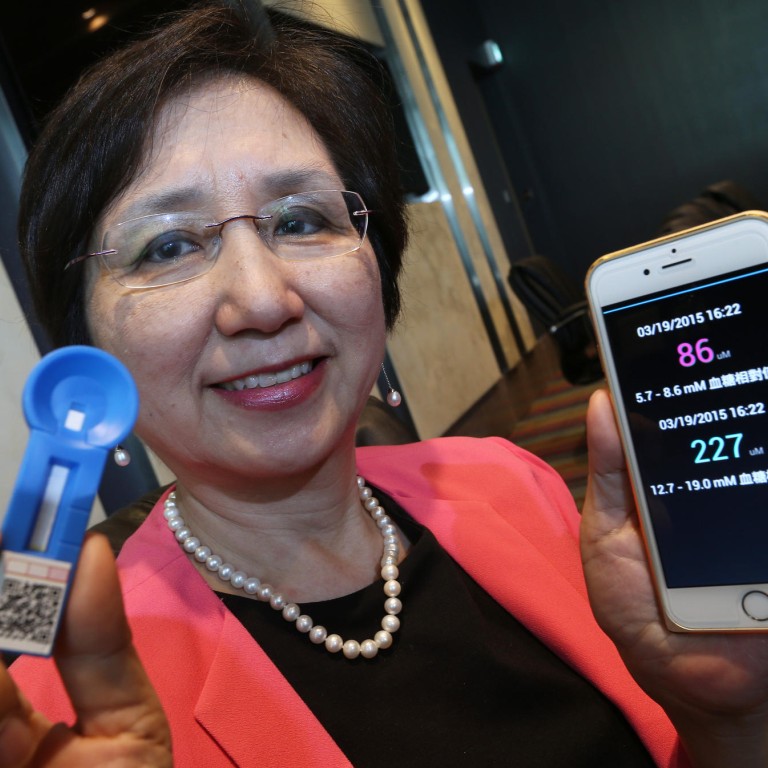
Kiss and Tell inventor's device is a painless way to catch diabetes early enough to act
Husband-and-wife team's Kiss and Tell device acts as key early warning system for Hongkongers at risk through diets high in sugar and salt
The "Kiss and Tell" test is as simple as it is clever. Just put a little of your saliva into a small blue receptacle and the line of paper next to it will indicate in minutes whether your glucose level is above normal.
It involves no pain from pricking fingers for blood, poses no risk of infection and is a key indicator as to whether you're at risk of diabetes.
It's the brainchild of Winnie Lun Yuet-seung, chief executive and founder of eNano Health, and her scientist husband, Patrick Leung. Since they met, during their university days, they have worked together developing medical devices for healthcare solutions.
Lun has been nominated by the Hong Kong Science and Technology Park Corporation for the Innovating for Good Award at this year's Spirit of Hong Kong Awards, organised by the .
"Frequent body glucose monitoring, together with a healthy lifestyle may be the best medicine in preventing or treating pre- or early-stage diabetes," says Leung, who is the chief scientist at eNano.
But the main problem in Hong Kong and mainland China, says Lun, is that many people have no idea they are at risk. She cites startling statistics.
In Hong Kong, 50 per cent of people at risk of Type 2 diabetes have no idea their glucose levels are so high.
The Kiss and Tell device for glucose testing targets Type 2 diabetes, which people can get later in life, often because of a sedentary lifestyle and too much sugar in the diet.
But the disease can be controlled, "through your food, taking exercise, watching out for your stress levels," Lun says, explaining that when detected early enough, it can be handled without medical intervention.
But it's not just about being overweight. Lun and her husband spent 30 years working in the United States before returning to Hong Kong and joining the four-year Incu-Bio programme at the Hong Kong Science and Technology Park.
"Most of the diabetic people in the US were obese," says Lun. "Children are becoming more and more obese. But in Hong Kong that rule doesn't apply."
Lun warns there's far too much sugar and salt in Hong Kong's food so it's important to reach people of normal weight who could have high blood glucose levels.
So the Kiss and Tell test comes in handy as it can be used two hours after eating food. The plastic device is easily affordable and allows people to monitor their own health. The paper inside is a biosensor that reacts to the glucose concentration in the saliva.
If the person's glucose is above normal two hours after meals, the person is likely pre-diabetic or diabetic. The paper turns pink or dark pink according to the glucose concentration in the saliva, showing the pre-diabetic or diabetic risk.
It's a very clear signal, says Lun, that you need to act.
Medical care is also changing in that more people are keen to monitor their own health. Lun and her husband often visit homes for elderly people and show them how to use the saliva test. They're more likely to use it, she says, than the one which requires them to prick their fingers and draw blood.
Lun and Leung now plan to develop nanotechnology-based biosensors that can be used around the world providing safe diagnostic tools, not only for diabetes, but also for cardiovascular disease, cancer and other infectious diseases.

